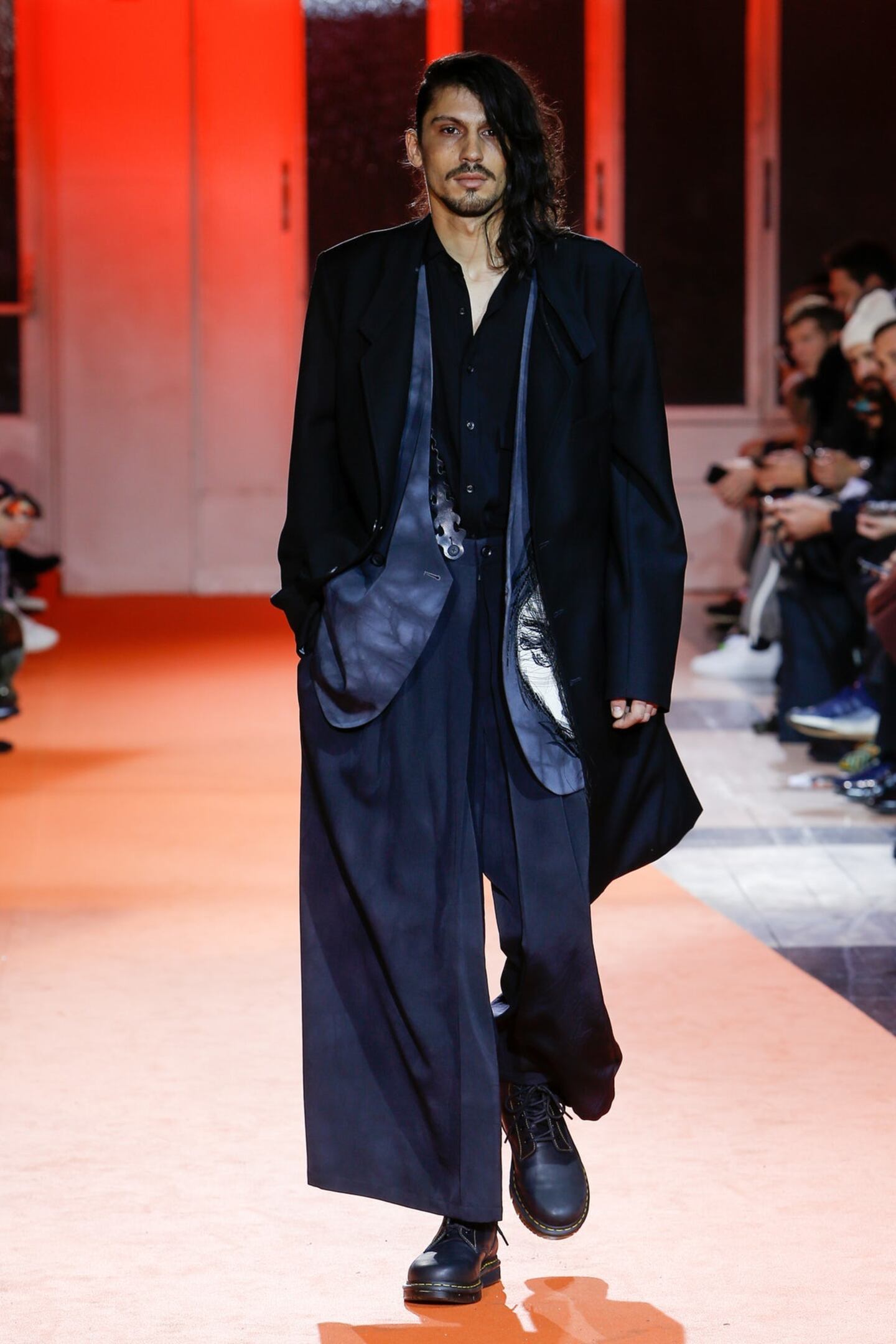
The Business of Fashion
Agenda-setting intelligence, analysis and advice for the global fashion community.

Agenda-setting intelligence, analysis and advice for the global fashion community.

PARIS, France — Times are getting tougher and tougher, but Yohji Yamamoto will never do away with his poetry. He just can't help it, and that's actually what makes him enduringly fascinating. His consistency is fascinating too: each Yohji collection grows from the previous and flows into the next, exploring, morphing, expanding and deepening the same ideas time after time. Black, masculine skirts and deconstructed/expansive tailoring are invariably part of the equation. They feel particularly relevant, again, now: both an antidote and an alternative to the overt decoration and loud streetwear that are defining the fashion-scape at the moment.
Today's show was another masterclass on the subject. It opened in black and in black it closed, coming across as a bit clerical and decidedly nonchalant. The shapes were particularly slouchy and the boots, as always, stompy. The finale, with models marching slowly to John Lennon's "Imagine" was touching: a poignant protest against our divisive times. But what at this point has begun to feel a bit tired is the monotonous way these shows are presented: you cannot really tell one from the other, sitting on the most uncomfortable chairs, crammed in the tiniest spaces. It would be interesting to break up the formula.
From where aspirational customers are spending to Kering’s challenges and Richemont’s fashion revival, BoF’s editor-in-chief shares key takeaways from conversations with industry insiders in London, Milan and Paris.
BoF editor-at-large Tim Blanks and Imran Amed, BoF founder and editor-in-chief, look back at the key moments of fashion month, from Seán McGirr’s debut at Alexander McQueen to Chemena Kamali’s first collection for Chloé.
Anthony Vaccarello staged a surprise show to launch a collection of gorgeously languid men’s tailoring, writes Tim Blanks.
BoF’s editors pick the best shows of the Autumn/Winter 2024 season.